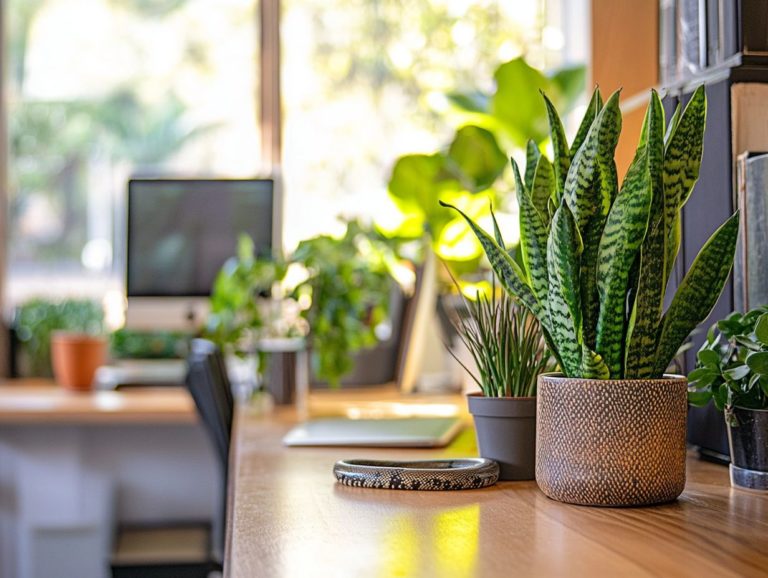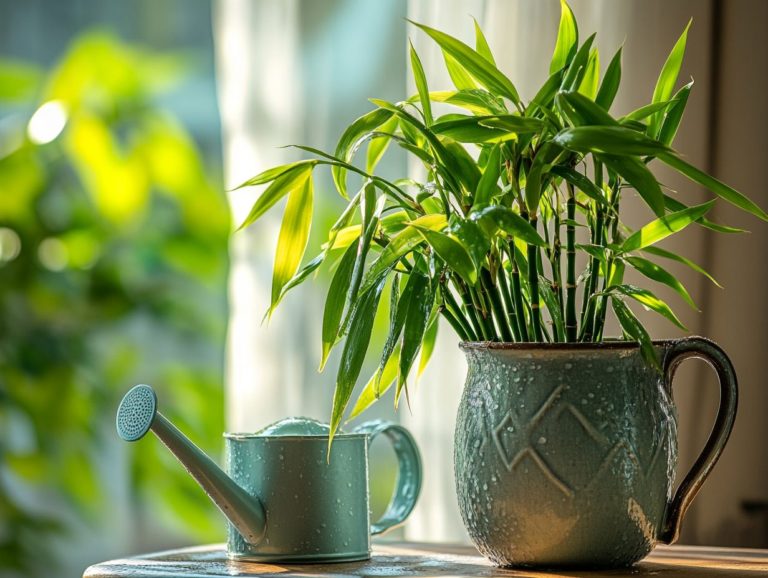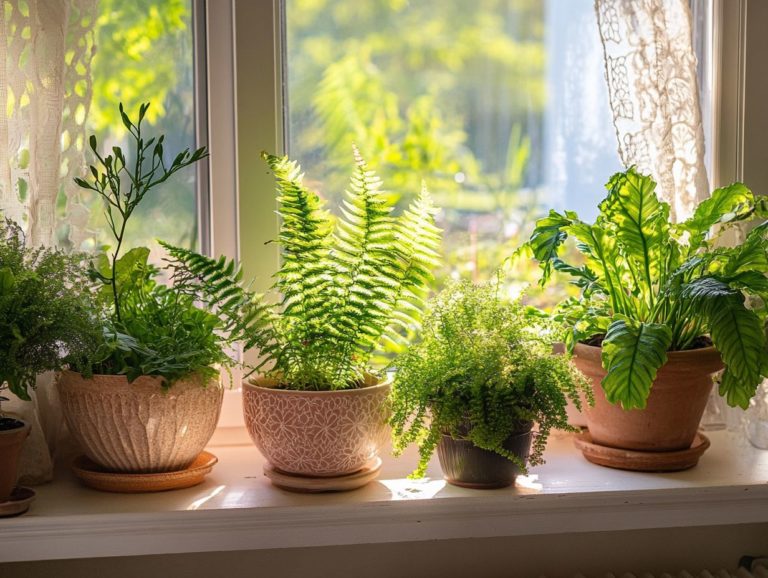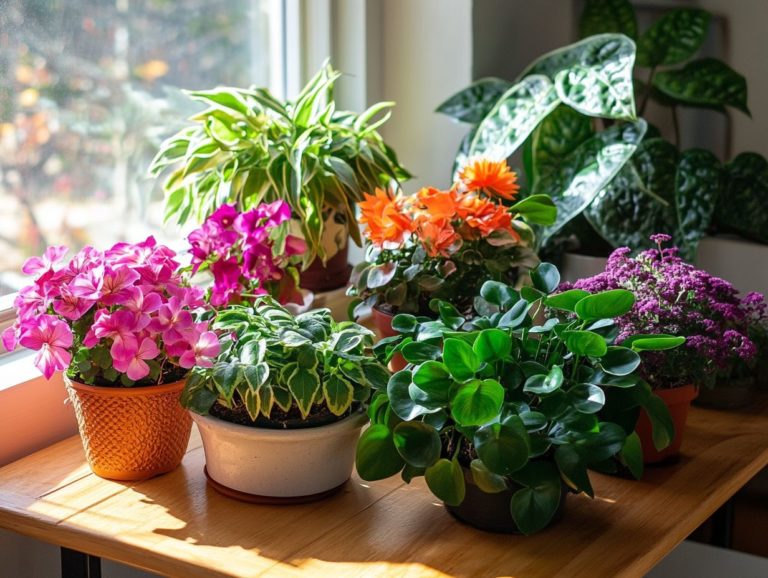How to Grow Indoor Strawberries Successfully
Growing strawberries indoors is more enticing than ever. You can enjoy fresh, sweet berries all year round, no matter the weather.
This guide will help you select the best strawberry types and prepare your growing space for optimal conditions.
You’ll also learn how to tackle common pests and diseases and discover tips for harvesting and enhancing flavors. Get ready to cultivate a delightful indoor garden!
Contents
- Key Takeaways:
- Choosing the Right Strawberry Varieties
- Preparing the Growing Space
- Planting and Caring for Indoor Strawberries
- Common Pests and Diseases of Indoor Strawberries
- Harvesting and Using Your Indoor Strawberries
- Frequently Asked Questions
- 1. How can I successfully grow strawberry plants indoors?
- 2. Can I grow strawberries in pots indoors?
- 3. How often do I need to follow a watering schedule for indoor strawberry plants?
- 4. Do I need to pollinate strawberries indoors?
- 5. What kind of light exposure is best for indoor strawberries?
- 6. How long does it take for indoor strawberries to produce sweet fruit?
Key Takeaways:
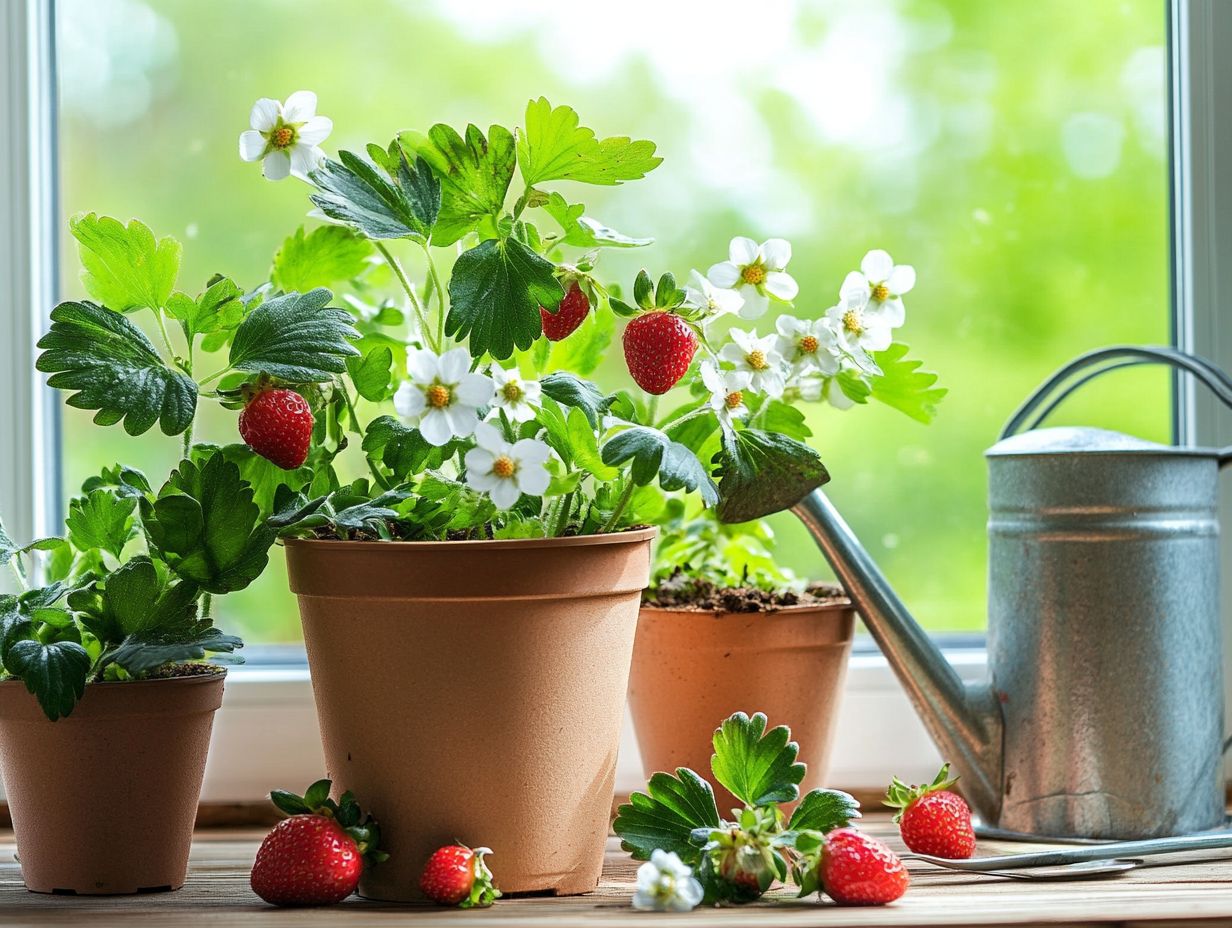
- Indoor strawberries let you enjoy fresh fruit all year.
- Choose varieties based on size, growth habit, and pollination needs.
- Proper lighting, temperature, humidity, soil, and water are crucial for success.
Why Grow Strawberries Indoors?
Growing strawberries indoors presents an incredible opportunity for you to enjoy sweet, fresh fruit year-round, free from the unpredictable challenges of outdoor gardening. With the right care regimen think proper light exposure and the soil or materials you use to grow plants you can successfully nurture a variety of strawberry plants, including popular selections like Albion and Seascape.
Not only do indoor strawberries enhance the aesthetic appeal of your indoor garden, but they also provide delicious homegrown crops, making them a fulfilling choice for both novice and seasoned gardeners.
Growing indoors gives you better control over pests, effectively keeping at bay many of the common insects that tend to invade outdoor gardens. By managing your environment with care, you can easily monitor watering, temperature, and humidity, ensuring optimal growth conditions.
When you grow strawberries indoors, you can enjoy fresh fruit, even in winter! The joy of handpicking ripe strawberries for your recipes or as a healthy snack not only contributes to a sustainable lifestyle but also fosters a profound sense of accomplishment that comes from tending to your indoor garden.
Choosing the Right Strawberry Varieties
Choosing the right strawberry varieties is essential for achieving success in your indoor gardening venture. Consider options such as Albion, Seascape, and Tristar, which are particularly well-suited for container growth in an indoor environment.
Day-neutral strawberries, in particular, stand out as they can yield fruit continuously throughout the growing season. This makes them an excellent choice for anyone seeking to savor a consistent supply of fresh, delicious strawberries.
Factors to Consider
When selecting strawberry varieties for indoor gardening, there are several crucial factors to consider. You’ll want to pay attention to the growing medium, watering schedule, light exposure, and the type of container you choose. Using a well-draining potting soil enriched with organic matter can significantly boost the growth and health of your strawberry plants, ensuring they get the right nutrients to flourish.
Understanding the specific environmental needs of different strawberry varieties, such as temperature and humidity levels, is vital for their successful cultivation. Striving for optimal light conditions like a south-facing window or using supplemental grow lights will help these plants photosynthesize effectively.
It s essential to regularly monitor moisture levels and adjust your watering schedule to prevent both overwatering and drought, as strawberries can be quite sensitive to their root conditions. Ultimately, selecting the right strawberry type means balancing all these variables to create the perfect indoor ecosystem for bountiful growth.
Preparing the Growing Space
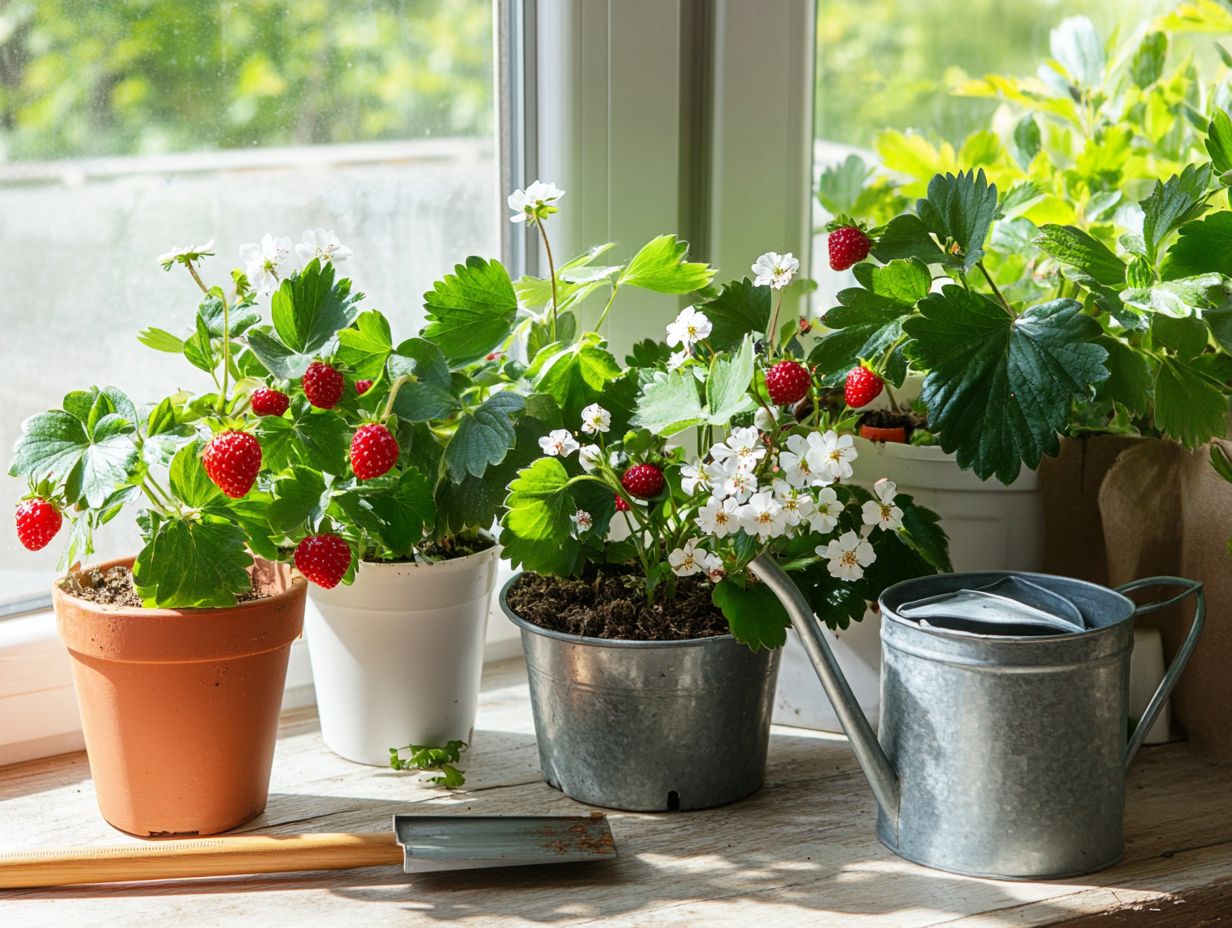
Preparing your growing space is essential for cultivating successful indoor strawberries. Optimize light exposure, temperature, and humidity to create the ideal environment for your plants. Using plant lights that mimic natural sunlight can significantly boost fruit production. Consistent temperature and humidity levels help your indoor garden thrive all year.
Lighting, Temperature, and Humidity Requirements
For optimal growth of your indoor strawberries, grasp their lighting, temperature, and humidity requirements, as these elements significantly influence successful fruit production. Aim to provide around 12-16 hours of artificial light each day from plant lights positioned near a southern-facing window to enhance photosynthesis and encourage an abundant harvest.
Temperature is another key factor; most strawberry varieties flourish between 65 F and 75 F during the day, with slightly cooler temperatures at night. Maintaining humidity levels around 50-70% is essential to avoid issues like powdery mildew. A hygrometer measures humidity, while a thermometer is used for temperature control.
Different varieties might have unique preferences, so research their specific needs. Incorporating fans for air circulation helps regulate humidity, ensuring your strawberry plants enjoy optimal conditions for fruitful yields.
Planting and Caring for Indoor Strawberries
Get ready for success! Focus on soil selection, watering methods, and fertilization techniques that cater to the unique growth requirements of indoor strawberries. Starting with premium potting soil and a consistent watering schedule ensures your plants receive essential hydration and nutrients throughout their growth cycle.
Soil, Watering, and Fertilizing Techniques
The choice of potting soil and a proper watering schedule are vital components in the successful cultivation of indoor strawberries, alongside effective fertilizing techniques. High-quality potting soil enriched with organic matter creates a nutrient-rich environment. A consistent watering schedule and using tomato feed a type of fertilizer suitable for strawberries can greatly enhance the overall health and yield of your plants.
For optimal growth, select a mix that includes peat moss, perlite, and compost for excellent drainage while retaining moisture. Water when the top inch of soil feels dry, ideally using a soaker hose or drip irrigation to deliver moisture directly to the roots without soaking the leaves.
Fertilizers high in potassium and a balanced mix specifically formulated for fruit-bearing plants can significantly boost flowering and fruit set. Regularly monitor soil pH and adjust with appropriate amendments to nurture healthier plants, paving the way for a bountiful indoor strawberry harvest.
Common Pests and Diseases of Indoor Strawberries
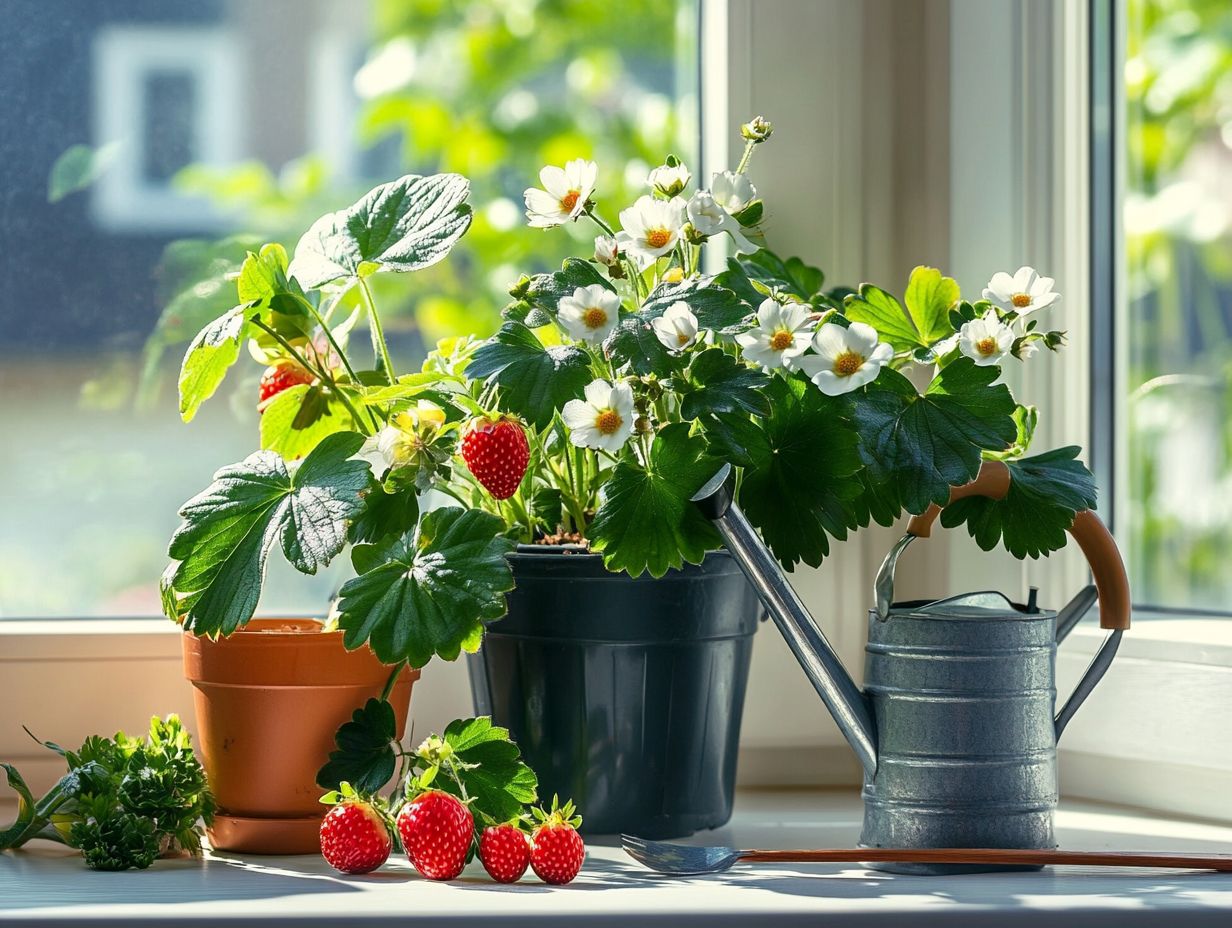
Act now to prevent pests and diseases! Understanding the common pests and diseases that impact indoor strawberries is crucial for maintaining plant health and ensuring a bountiful harvest. By adopting effective prevention and treatment strategies, you can significantly reduce the risk of infestations and diseases.
This proactive approach enables your strawberry plants to flourish, yielding sweet, succulent fruit free from disruptions caused by troublesome pests.
Prevention and Treatment Strategies
Implementing effective prevention and treatment strategies is important for protecting your indoor strawberries from pesky pests and diseases that can endanger their health. By using organic methods for pest control, like introducing beneficial insects or applying neem oil, you can safeguard your crops while ensuring your strawberries remain safe, healthy, and able to thrive.
Eco-friendly solutions like crop rotation and maintaining optimal humidity levels can greatly improve your plants resilience. Regular inspections help you catch any early signs of pest infestation and enable timely interventions. Plus, using organic mulches not only suppresses weeds but also enhances soil health, allowing your strawberry plants to flourish.
Remember, a thriving plant is your best defense against unwanted pests. Focusing on robust growth through proper watering and fertilization is crucial for long-term success.
Harvesting and Using Your Indoor Strawberries
Harvesting your indoor strawberries at the right moment is crucial for maximizing both flavor and shelf life. This allows you to enjoy the distinct sweetness of your homegrown crops.
By closely monitoring the ripeness of your strawberries, you can ensure that you pick them at their peak, enhancing their taste and extending their usability for fresh fruit enjoyment.
Tips for Maximizing Flavor and Shelf Life
Want to savor the best flavor and shelf life from your indoor strawberries? Follow these best practices during both the harvesting and storage processes. Gently harvesting strawberries preserves their integrity, while storing them in a cool, dry place will significantly extend their freshness and delightful flavor.
Choose fully ripe strawberries; this not only boosts sweetness but also ensures they’ve reached their peak flavor. After harvesting, use breathable containers, like cardboard or baskets, to avoid moisture buildup that can lead to mold and spoilage.
Incorporating organic matter, such as compost, into your growing medium can profoundly impact the taste by providing essential nutrients. These practical techniques elevate the quality of your berries and enrich your overall gardening experience.
Frequently Asked Questions
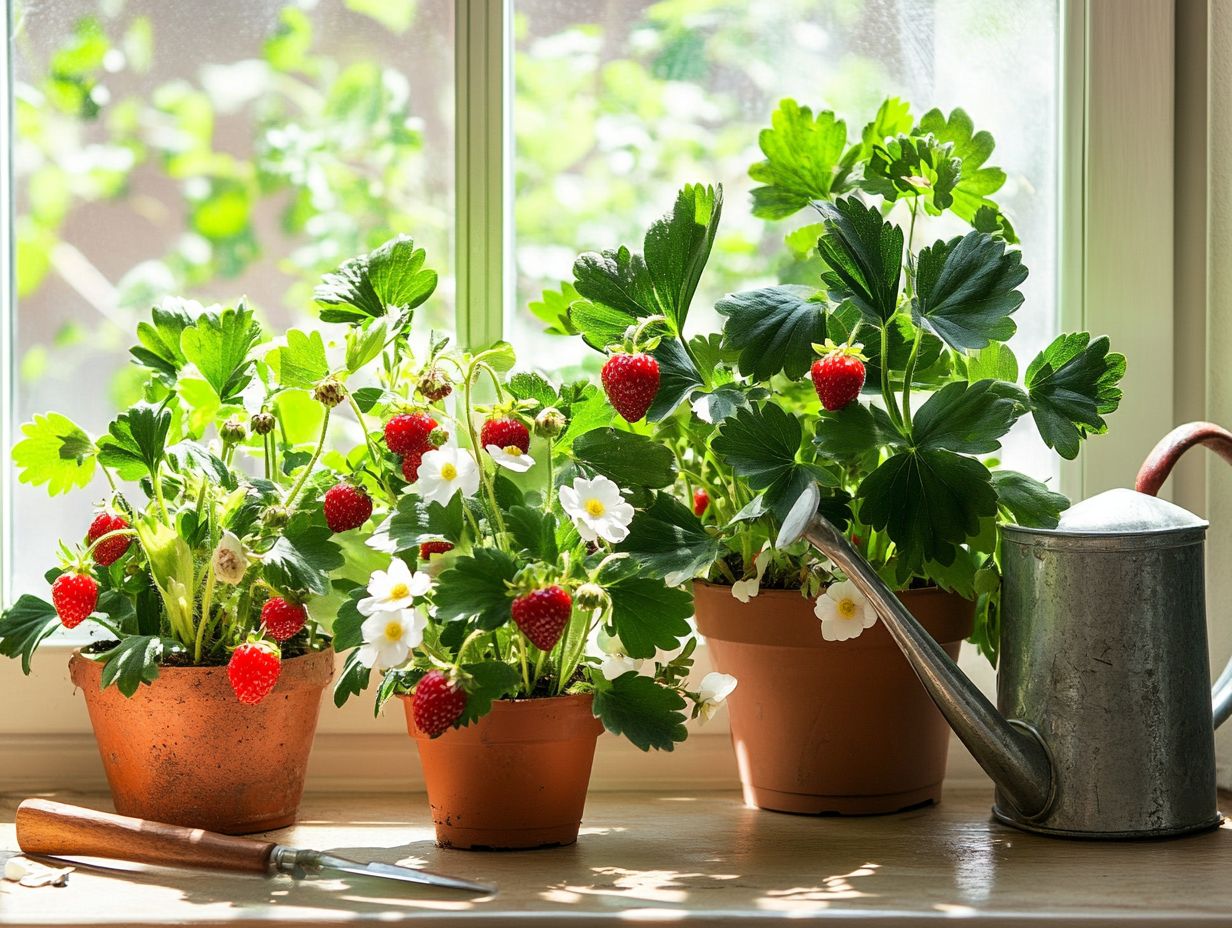
1. How can I successfully grow strawberry plants indoors?
To successfully grow strawberries indoors, provide the plants with plenty of sunlight, well-draining soil, and regular watering. You may also need to supplement with artificial light to ensure they receive enough sunlight. Choosing the right variety of strawberry that thrives indoors is crucial for success.
2. Can I grow strawberries in pots indoors?
Yes, strawberries can be grown in pots indoors as long as they have enough space for their roots and proper drainage. It’s important to use a potting mix designed for containers and to choose a pot with drainage holes at the bottom.
3. How often do I need to follow a watering schedule for indoor strawberry plants?
Indoor strawberry plants should be watered regularly, typically 1-2 times a week, depending on your home’s humidity and temperature. Keep the soil consistently moist but not waterlogged to prevent root rot.
4. Do I need to pollinate strawberries indoors?
If you’re growing strawberries indoors in a greenhouse or enclosed space, you may need to hand pollinate the plants using a small paintbrush or by gently shaking them. However, if you have a window that can be opened for pollinators, they will naturally pollinate your plants.
5. What kind of light exposure is best for indoor strawberries?
Indoor strawberries require at least 6-8 hours of sunlight each day. If you can t provide this amount of natural light, supplement with grow lights. LED lights are a popular option as they are energy-efficient and can be adjusted to provide the specific spectrum of light that plants need for optimal growth.
6. How long does it take for indoor strawberries to produce sweet fruit?
On average, indoor strawberries will start producing fruit in just 4-6 weeks after planting! The timeline can vary based on the type of strawberry and the growing conditions.
It’s crucial to be patient and provide consistent care for your plants. This will ensure a successful and rewarding harvest.

